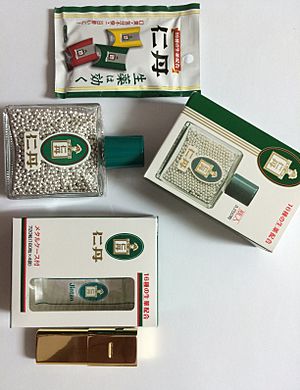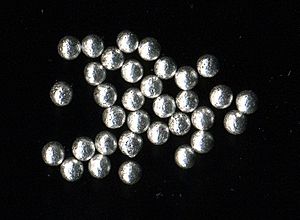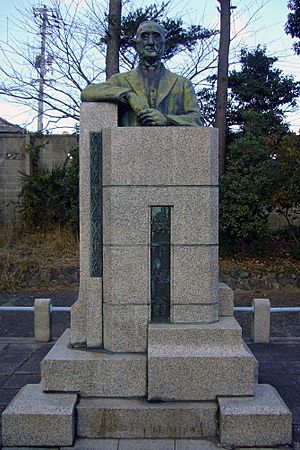Jintan (Japanese medicine) facts for kids
Jintan (仁丹) is a famous Japanese product. It's like a mix of medicine and candy. A man named Morishita Hiroshi (1869–1943) created it. People have been buying it since the early 1900s. At first, it was sold to help with many health problems. Today, most people use Jintan as a breath freshener.
Contents
The Story of Jintan
Morishita Hiroshi was born in Fukuyama, Hiroshima. His father was a priest at the Nunakuma-Shrine (沼名前神社). After his father passed away, Morishita moved to Osaka. There, he began to create different kinds of medicines.
Morishita Hiroshi was also one of the first people to use modern advertising in Japan. The small, silver, round pills were advertised a lot. This advertising started in 1904 and continued until the end of World War II in 1945.
What Does the Name Jintan Mean?
The name Jintan has a special meaning. It combines two important ideas from old Asian philosophies.
- Jin (仁) comes from Confucianism. This word means kindness or being good to others.
- Tan (丹) comes from Taoism. This word refers to special pills or elixirs. These were thought to help people live longer and stay healthy.
So, the name Jintan suggests health and a long life.
What's Inside Jintan?
Jintan is made from about 16 different ingredients. Some of the main ones include:
How Jintan Was Packaged
During the Russo-Japanese War, the packaging for Jintan was changed. It featured a picture of a Meiji period soldier. This soldier wore a fancy uniform and a special hat called a bicorne.




